Any list of the real hotbeds of far-left college activism in the United States in the mid- and late 1960s would have to include the University of California, the University of Michigan, Ohio State University, the 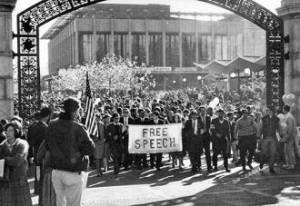 University of Wisconsin, Indiana University, the University of Kansas, Columbia University, Harvard University, Cornell University, New York University and San Jose State University. None of those institutions are located in the South, as you can see. There is one Southern school, however, that arguably should be mentioned. I refer to my alma mater, the University of Texas. Hard-core lefties can be smug people, and those from Berkeley, Ann Arbor, etc. might scoff at the very notion of Austin. But it’s all a matter of degree, and I can state with certainty that UT has a long tradition of liberal/radical activism.
University of Wisconsin, Indiana University, the University of Kansas, Columbia University, Harvard University, Cornell University, New York University and San Jose State University. None of those institutions are located in the South, as you can see. There is one Southern school, however, that arguably should be mentioned. I refer to my alma mater, the University of Texas. Hard-core lefties can be smug people, and those from Berkeley, Ann Arbor, etc. might scoff at the very notion of Austin. But it’s all a matter of degree, and I can state with certainty that UT has a long tradition of liberal/radical activism.
Protests in Austin
The first known instance of political protest at the university came in the 1920s when Texas Governor James Ferguson sought to impose his conservative views. Students, faculty, the administration and alumni pushed back. There were more rumbles the next decade as UT students, a few of them at least, talked favorably of Marxism and the Soviet Union. Some joined the National Student League, the Young Communist League and the American Student Union. The Spanish Civil War was a hot topic. In the 1940s, there was campus upheaval when the Board of Regents fired President Homer Rainey, a liberal. By the 1950s, racial integration—on campus, in Austin and throughout American society—was the main issue. Picketing, sit-ins and more raucous forms of protest took place over a 10- or 15-year period. The 1960s, of course, was the peak of social and political rebellion at UT, as elsewhere. Protest, always loud and always over the top, was the norm: the Vietnam War, drugs, freedom of expression, anti-imperialism and a revolt against perceived patriarchal domination were just some of the students’ concerns. The 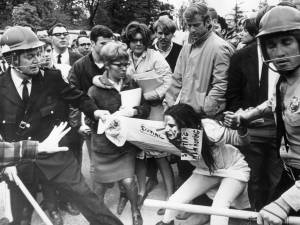 Weather Underground and Students for a Democratic Society both had active links to UT. The office of Dr. Norman Hackerman, vice chancellor for academic affairs from 1963 to 1970, was taken over several times. After one such event, he lamented, “College students today don’t just want to be heard, they want to be obeyed.”
Weather Underground and Students for a Democratic Society both had active links to UT. The office of Dr. Norman Hackerman, vice chancellor for academic affairs from 1963 to 1970, was taken over several times. After one such event, he lamented, “College students today don’t just want to be heard, they want to be obeyed.”
Members of these radical groups presented their views angrily and relentlessly, and heaven forbid if you disagreed with them. They chanted, they gave out flyers, they scrawled graffiti, they waved banners, and they made threats. Remember the Chicago Seven? Abbie Hoffman, Jerry Rubin, et al. were charged with conspiracy and inciting to riot during the 1968 Democratic Convention. Well, that naming format caught on in the media and so it was used again and again. Any group of radicals who were in custody got a similar tag. On campus, on the Drag, seemingly everywhere you saw and heard it—“Free the Chattanooga Four!” “Free the Little Rock Nine!” “Free the Houston Thirteen!” (All are fictional, of course.) We were supposed to know who those people were, and agree on their innocence and the rank unfairness of their incarceration.
Mostly normal students
It would be an overstatement to claim that all University of Texas students in the 1960s were wild-eyed leftists. In fact, many or perhaps most just wanted to earn a diploma and get on with their lives. The early and mid-1970s, when I was an undergraduate, was a slightly less boisterous time. But my recollection is that left-wing pressure was constant. In the classrooms, in the pages of the Daily Texan, on the Drag 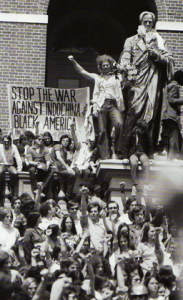 (five blocks of Guadalupe Street, immediately west of campus), there it was. Good luck trying to escape it. Even before I started my college education, I was exposed to this stuff; while attending freshman orientation at Kinsolving Dormitory in the summer of 1971, I was confronted by a guy peddling a radical newspaper. And I do not refer to The Rag, an underground weekly published in Austin from 1966 to 1977. The Rag was political, but it also touched on countercultural matters such as music and hippie life. This first one was about one thing, revolution.
(five blocks of Guadalupe Street, immediately west of campus), there it was. Good luck trying to escape it. Even before I started my college education, I was exposed to this stuff; while attending freshman orientation at Kinsolving Dormitory in the summer of 1971, I was confronted by a guy peddling a radical newspaper. And I do not refer to The Rag, an underground weekly published in Austin from 1966 to 1977. The Rag was political, but it also touched on countercultural matters such as music and hippie life. This first one was about one thing, revolution.
I never felt any desire to join these groups, nor did I adhere to their views. Then, as now, I was a potpourri of moderate left, moderate right and middle of the road. Extremism in any form is just not in my DNA, so to speak. I was back as a UT student in 1982 and 1983, taking courses in journalism, editing and creative writing. As such, I was a member of the Daily Texan staff. I wrote mostly about sports, but there were features, book reviews and even a badly done story about a local female singer named Angela Strehli. The Texan at that time had a bi-weekly publication called Images. Its editor, Barbara Paulsen, agreed to let me write a lengthy story about a radical group that had caught my attention—the John Brown Anti-Klan Committee.
Mr. Brown foments the Civil War
Before going any further, I will remind you that John Brown was a fiery anti-slavery activist who in 1859 led an assault on the federal arsenal at Harpers Ferry, Virginia. His purpose was to incite a slave rebellion that would end the South’s “peculiar institution” once and for all. It failed, and Brown was hanged six months later. But what a martyr! U.S. soldiers went to battle in the Civil War (which he hastened) singing, “John Brown’s body lies a-mouldering in the grave….” Malcolm X, who hated European-Americans with a passion, nevertheless had genuine respect for Brown.
I did interviews with several members of the JBAKC and conducted research as best I could in those pre-Internet days. Barbara must have liked what I wrote because she gave it two full pages in Images. On the cover was an artistic rendering of Brown, raging like an Old Testament prophet. This article, of which I no longer have a copy, gave me considerable pride. It was a pretty big step in my budding journalism 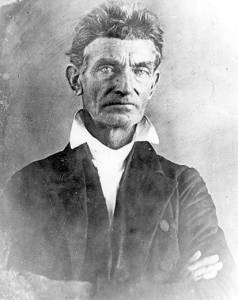 career. And yet I am not sure I adequately stated the motivation of the young European-Americans who composed the Austin chapter of the JBAKC. While I vaguely admired their idealism, I suspected there was a certain amount of guilt and self-hatred operating in their hearts. Psychoanalyzing them, however, was not my purpose.
career. And yet I am not sure I adequately stated the motivation of the young European-Americans who composed the Austin chapter of the JBAKC. While I vaguely admired their idealism, I suspected there was a certain amount of guilt and self-hatred operating in their hearts. Psychoanalyzing them, however, was not my purpose.
I refused to buy
In the article I strove for balance, but they had to know I did not buy what they were selling. One of their members (Marilyn Buck, a UT student in the late 1960s) had been part of an infamous hijacking of a Brink’s armored car in Nanuet, New York in 1981 that resulted in the deaths of two police officers and a security guard, and $1.6 million being stolen. The JBAKC members to whom I spoke insisted on calling it an “expropriation.” I told them that they were engaging in semantics and denial on a massive scale. I rejected that claim as well as their advocacy of the so-called Republic of New Afrika. It holds that the states of Louisiana, Mississippi, Alabama, Georgia and South Carolina, and parts of Texas, Arkansas, Tennessee, North Carolina and Florida should be given over to all-black governance. The RNA, oddly enough, is based in Detroit. There is already a declaration of independence, a constitution and a host of other demands. The RNA has been involved in shootouts with law enforcement officials and is regarded by the FBI as a seditious organization.
The John Brown Anti-Klan Committee, meanwhile, ran out of steam in the late 1980s, as some members joined different radical groups. Others, we may assume, went straight—that is, they got jobs, had families and accepted the fact that this is an imperfect world. A few probably started voting Republican. It’s possible that the JBAKC was a front organization for the May 19 Communist Movement, which, in turn, had its roots in the Black Liberation Army and the aforementioned Weather Underground. The May 19 group is best known for having orchestrated an escape at a New Jersey women’s prison in 1979 (one member would later take part in the Brink’s holdup) and the bombing of the U.S. Senate building in Washington, D.C. in 1983.

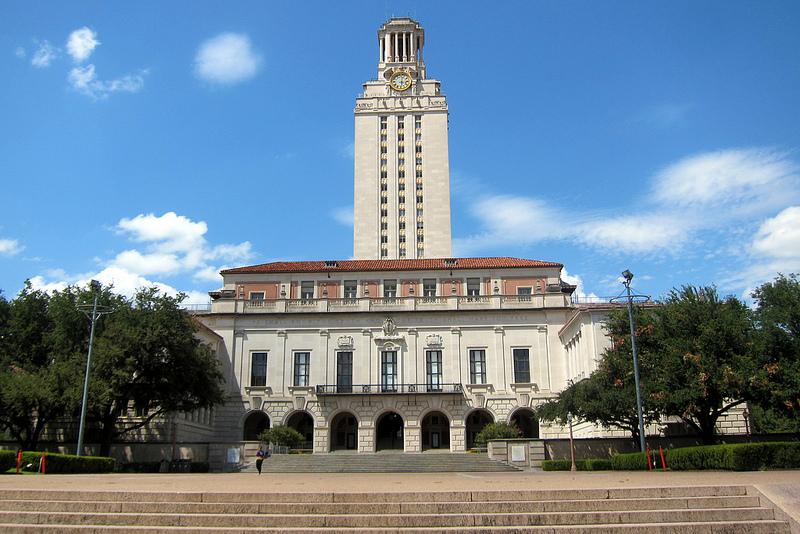
Add Comment